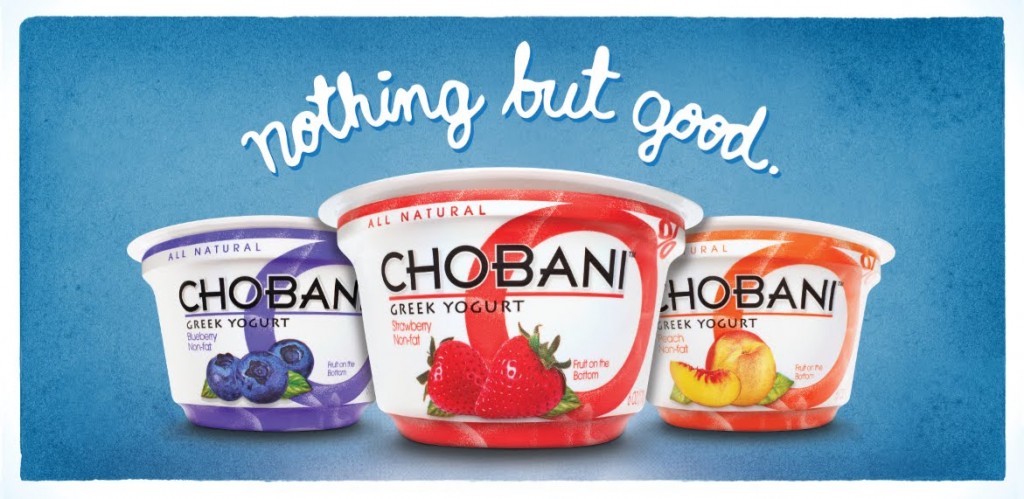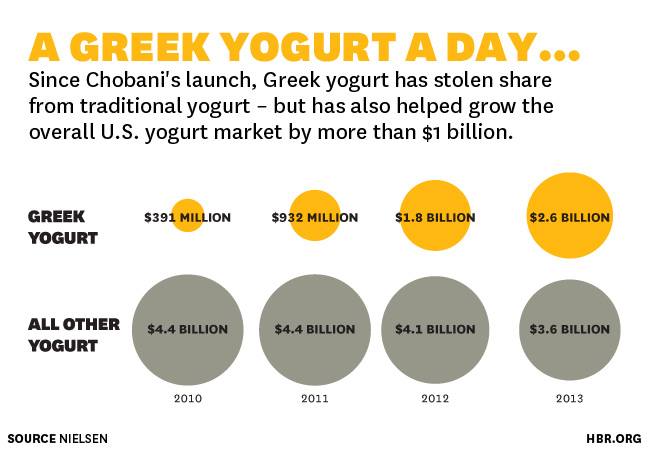As revistas de gestão adotaram este novo case study e nas redes não se fala de outra coisa… E eu que tenho o recorte em cima da minha mesa de trabalho desde o final de Agosto não posso continuar a fugir a falar deste fenómeno. Comecemos pelo início na primeira pessoa:
“I’ve always loved yogurt—the thick kind I grew up eating in Turkey, where my mother made it from scratch on our family’s dairy farm. When I moved to the United States, in 1994, I found American yogurt to be disgusting—too sugary and watery. If I wanted yogurt, I usually made it myself at home. So when I came across a piece of junk mail advertising a fully equipped yogurt factory for sale, in March 2005, I was curious. The factory was about 65 miles west of the feta cheese company, Euphrates, that I’d started in upstate New York a few years earlier. In 2005 Euphrates had fewer than 40 employees and about $2 million in sales; it was barely breaking even.
Kraft owned the yogurt factory, and it had decided to get out of the yogurt business. The advertisement showed some photographs of the building, which had been constructed in 1920 and appeared to be in rough shape. The best thing about the place was the price: less than $1 million. Some of the individual machines would cost more than that if purchased new. I was able to borrow the money to buy the factory—and after Chobani hit the market, I financed our growth through further bank loans and reinvested profits.”
2005: Hamdi Ulukaya buys an old Kraft yogurt plant in upstate New York.
2006: The plant makes U.S.-style yogurt for other companies, while Ulukaya and a Turkish-born yogurt maker develop the Chobani recipe.
2007: The first cup of Chobani hits grocery shelves in Great Neck, New York.
2009: Chobani becomes the best-selling brand of Greek yogurt in the United States.
2010: Chobani becomes the best-selling brand of all yogurt in the United States and expands to Canada and Australia.
2013: Chobani sales are expected to top $1.3 billion.
Haveria tanto para dizer mas deixo-vos com esta imagem da HBR é uma magnífica descrição do que é uma inovação disruptiva na sua criação de mercado. E o que é surpreendente com o Chobani é como se cria uma inovação disruptiva a partir da introdução num mercado de um produto que é na base um produto tradicional e sem grande novidade tecnológica, mas com uma leitura das tendências de mercado que o leva ao sucesso. Se se consegue criar um mercado de mais de 2 mil milhões de euros a partir do iogurte grego que mercados e de que valor conseguiríamos criar a partir de alguns dos nossos produtos tradicionais? Necessito de voltar aqui ao apelo em favor das natas e do frango de churrasco?
E já agora a minha homenagem a Hamdi Ulukaya que soube sonhar a mudança, acreditar nela, e trabalhar para a fazer acontecer.



